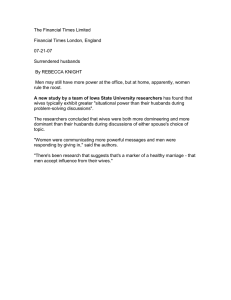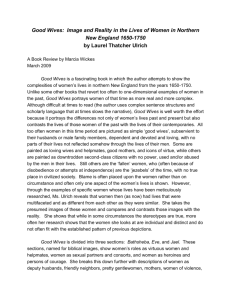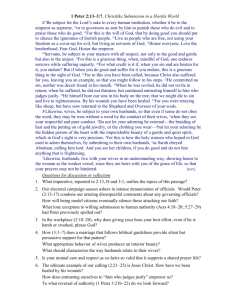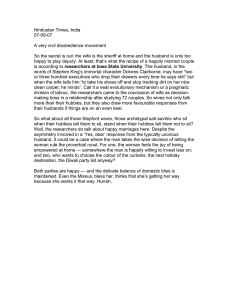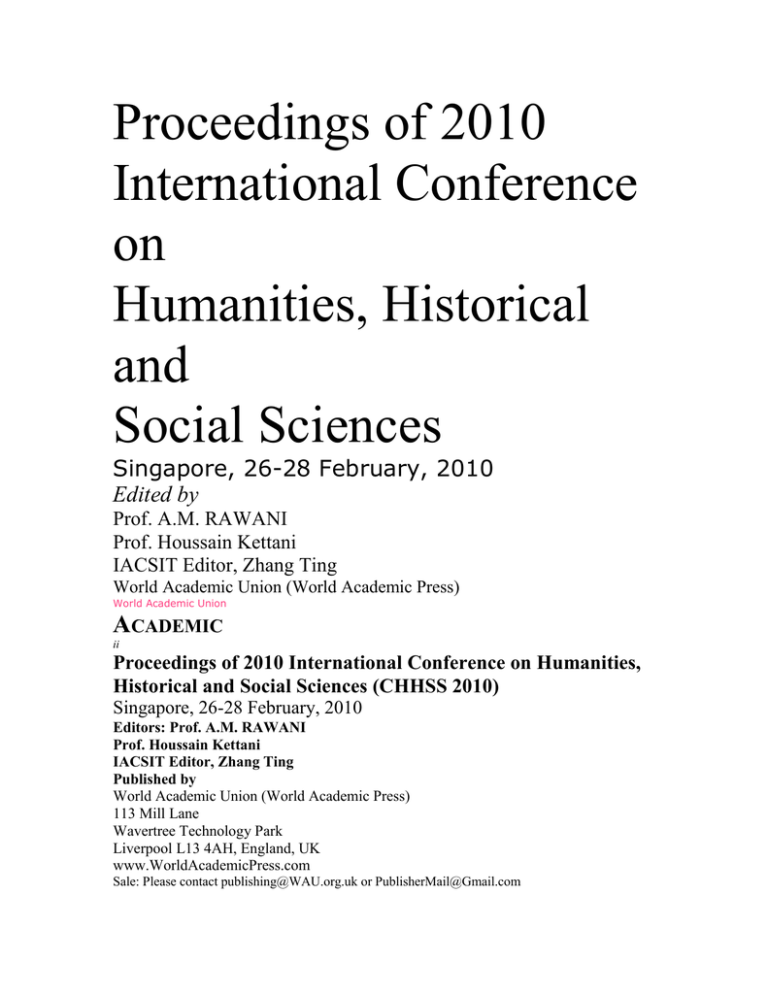
Proceedings of 2010
International Conference
on
Humanities, Historical
and
Social Sciences
Singapore, 26-28 February, 2010
Edited by
Prof. A.M. RAWANI
Prof. Houssain Kettani
IACSIT Editor, Zhang Ting
World Academic Union (World Academic Press)
World Academic Union
ACADEMIC
ii
Proceedings of 2010 International Conference on Humanities,
Historical and Social Sciences (CHHSS 2010)
Singapore, 26-28 February, 2010
Editors: Prof. A.M. RAWANI
Prof. Houssain Kettani
IACSIT Editor, Zhang Ting
Published by
World Academic Union (World Academic Press)
113 Mill Lane
Wavertree Technology Park
Liverpool L13 4AH, England, UK
www.WorldAcademicPress.com
Sale: Please contact publishing@WAU.org.uk or PublisherMail@Gmail.com
Copyright © 2010 World Academic Union (World Academic Press)
All rights reserved. No part of this book may be reproduced, stored in a
retrieval system, or transmitted, in any form or by any means, electronic,
mechanical, photocopying, recording, or otherwise, without permission in
writing from the publisher.
ISBN13: 978-1-84626-025-4
شماره مقاله
79. Comparison of insecurity feeling between Normal and Self sacrificer Wives: The Case of
Khorasan Razavi Province
Hossein Behravan
Comparison of insecurity feeling between Normal and Self
sacrificer Wives: the Case of Khorasan Razavi Province
Hossein Behravan
Associate Professor, Department of Social Sciences Faculty of Humanities,
Ferdowsi University of Mashhad
Mashhad, Khorasan Razavi, Iran (Islamic Republic of) behravan@um.ac.ir
Introduction
Women have many contexts of women’s insecurity feeling (IF) in Iran that may be related to
socio-economic status, inside the family and in public relations. Researches reported many types
of conflicts, aggression, domestic violence, discrimination, stress, depression, anxiety,
uncertainty, worry and oppression contexts for women in Iran (arabpour, 2003; Bakhtiari,
Omidbakhsh, 2003). Muslim women in Australia had many difficulties in cultural aspects
involving discrimination, food insecurity, maltreat, acrimony, sexual insecurity, family disorder,
worry and uncertainty about children’s beliefs, isolation, loneliness, fear of appearance in public
environments because of the problems they had in communication with others (Casimiro, 2007).
Women’s insecurity is current in US families (Schafer, Caetano, Clark, 1998).A similar result of
domestic violence has been reported among Vietnamese veteran families (Orcutt, King and King,
2003). Results of studies on American veteran’s interaction with their family members showed
violent behavior conducted by the soldiers against their wife (U. S. Army's Family Advocacy
Program, 2004). Some studies on Australian veterans showed that veterans’ wives had more
psychological problems than other wives (Breda, 2002). More than two millions of women were
abused by their husbands during the year and were victims of violence in various ways (Soler,
Caetano, Clark, 2001). Women also feel insecurity outside their home in Iran (Najibi Rabiee,
2005). The results of a survey on social security feeling of people in Tehran showed that
obtrusiveness to women was among the five highest criminal acts in the city and women felt high
insecurity at night when passing empty streets or riding on a taxi (Students poll Centre, 2002). A
national survey in Iran indicated that women were worried about loosing their job, getting
suitable job, felt insecurity in public environments, felt financial insecurity, and felt body health
insecurity (Ministry of Culture and Islamic Guidance, 2003). A similar survey indicated that
women are not satisfied with their financial situation, housing, neighborhood, marriage aspects,
and did not feel lucky in their lives (Headquarter of Culture and Islamic Guidance in Khorasan
Razavi, 2006). One can not expect special supportive organization to be able to consider all
aspects of the insecurity issues; hence this article includes many aspects of concerns or IF so as to
distinguish IF as an universal phenomenon of the wives in Iran compared with the special groups
of wives whom we name self sacrificer1 groups (SSG) who are supported by Foundation of
Martyr and Veteran Affairs (FMVA) in order to clarify shortages of supportive services to the
SSG in one hand and the importance of attention to the total wives in the other hand. The purpose
of this article is to answer the question: “Is socio-economic IF among SSG wives less compared
that of normal wives?” The answer to this question will determine overall circumstances of
society which are responsible for the creation of IF among the wives.
Theoretical framework
Sources and the conditions of IF and the differences between the wives can be explained by tow
approaches namely Need Theory and Feminist Conflict Theory. IF sources and its differences
between the wives can be related to different needs and satisfaction levels. People, whose needs
are satisfied, have less IF. Harry Stack Solivan argues that the main part of human activities is
made to lessen or decrease tensions which stem from two sources: physical needs and anxiety of
social insecurity (Barton, 1996). According to Maslow (1970), IF can be viewed as the result of
activity to fulfill security need in which the wives are seeking security, stability, dependency,
support, escape from fear, worry and anxiety, seeking order, organization, legal support,
powerful protector and so on. Lindgern (1967) maintained that unsatisfied lower level needs
create fear and aggression and unsatisfied upper level needs create anxiety and worry. In accord
with Lee Chronbachs’ (1954) idea, IF is developed when one’s needs are not met successfully. In
the view of Murray, need is a hypothetical concept which helps explain different behaviour of the
individuals. On the other hand, internal and external stimuli’s influence on behavior and
individuals learn from interaction with environment how to improve their actions. They calculate
the consequences of their action and their perception of the future affects the present action
(Shultz, 2003). Thus, it is assumed that the rate of IF is related to the individual perceptions and
characteristics and to the extent their needs are fulfilled. From the feminist conflict view, one
can believe IF is related to the division of labor across genders. This feeling originates from
gender differences, gender inequalities and gender oppression. In this view, females are under
superiority, subordination, abuse, oppression and maltreat of males (Ritzer, 2004). Females’
position is the outcome of this relationship through which males seek their objectives and
fundamental benefits in oppressing, abusing and subordinating females.
Method
The method of this study was survey which included four groups of wives namely: martyr,
veteran, POW, and normal who were living in the neighborhoods of the former three groups. The
sample includes 1177 from which 587 were self sacrificer. The number of normal wives who
used as the control group was 590. Sampling strategy was the combination of two stages,
stratified, random, cluster, and systematic sampling.
Insecurity feeling measure: This concept was defined as “involving feelings of threatening
and worrying situations, socio-economic disasters, intolerable living conditions, family conflicts,
domestic violence and aggression, negative attitudes to wives, denial of legal rights, lack of
authority and independence”. This measure includes fearful or stressful situations at present as
well as worrisome situations at future. To measure these feelings 68 items were used. Factor
analysis of the IF items extracted 15 dimensions for IF. The total mean ratio of IF measurement
for the respondent was calculated by dividing the total number of yes scores for IF items by 68.
1
The Self Sacrificers Group (equivalent for Isargaran in Farsi) subsumes three groups of Shahid, Janbaz
and Azadeh which are the Farsi equivalents for Martyr (A woman who has lost her husband in the war),
Veteran (A woman whose husband has been injured or handicapped in the war), and Prisoner of war (A
woman whose husband has been imprisoned during the war).
Validity: Four methods of validation of the measurements were used as follows: (1 using
existing studies and theoretical documents and explorative interviews with wives (2 coworker
judgments (3 concurrent criterion validity using parallel open questions and a correlation matrix
(4 construct validity using factor analysis.
Reliability: Cronbachs’ alpha for the IF measurement with 68 items was 0.94.
Results
Table 1 shows the rate of IF for wives in each of the SSG and normal groups. The numbers in
the table are mean ratio of IF which correspond to the ratio of yes responses for the items in each
dimension of IF. Then, the ratios are sorted by the column of total wives.
Intensity of IF and its dimensions across the sample: Table 1 shows that 44 percent of the
total 68 IF items is felt by the wives. This value of IF does not show any significant difference
between the two groups of wives, although martyr wives felt the least IF and veteran felt the
most. Another important result in the table is that the rate of IF in 6 out of 15 dimensions is
significantly above the total IF rate which can be interpreted as a highly intense IF dimensions.
For the other 9 dimensions, the rate is significantly below the total IF rate which can be
interpreted as less intense IF dimensions. The more intense dimensions are health, children’s
problems, financial shortage, threat sense in streets, financial independence, authority over
children and the less intense IF dimensions are legal rights, role of people, housing, husband
illness, role of kin, role of husband, life, job, and sexual need.
Comparison of intensity of IF dimensions between SSG and normal wives:
Table 1 shows that in one out of three highly intense IF dimensions SSG felt higher IF which
relates to children’s problems, while in the two another intense dimensions normal wives felt
higher IF which relate to threat sense in streets and financial independence. On the other hand, in
three out of five less intense IF dimensions SSG felt higher IF which relate to role of people ,
sexual need and husband illness while in the two another less intense dimensions normal wives
felt higher IF which relate to housing and job. Results suggest that the numbers of intense IF are
more in normal than that of SSG wives.
TABLE -1 Mean Ratio of IF Dimensions for SSG and Normal Wives
POW
Veteran
Martyr
Number
of items
0.86
0.83
0.86
0.84
2
+0.85
Asymp.
Sig. (2tailed)
0.162
0.71
0.79
0.79
0.71
6
+0.74
0.001*
SSG
0.63
0.6
0.63
0.53
6
+0.61
0.148
-
0.62
0.56
0.57
0.5
4
+0.58
0.002*
Normal
0.62
0.5
0.57
0.36
3
+0.56
0.000**
Normal
0.54
0.55
0.52
0.42
3
+0.52
0.089
-
0.44
0.44
0.36
68
0.44
0.171
-
0.41
0.42
0.38
5
-0.41
0.667
-
IF Dimensions
Normal
Health
Children’s
problems
Financial shortage
Threat sense in
streets
Financial
independence
Authority over
children
Total IF Mean
ratio
Legal rights
SSG Wives
0.46
0.44
Total
wives
Group with
higher IF
Mean Ratio
-
Role of people
0.38
0.36
0.44
0.41
9
-0.40
0.050*
SSG
Housing
0.49
0.37
0.3
0.26
6
-0.39
0.000**
Normal
Husband illness
0.25
0.54
0.63
0.11
2
-0.36
0.000**
SSG
Role of kin
0.36
0.34
0.39
0.31
7
-0.36
0.981
-
Role of husband
0.28
0.34
0.38
0.11
7
-0.29
0.912
-
Life
0.19
0.1
0.2
0.18
2
-0.18
0.636
-
Job
0.12
0.18
0.08
0.08
5
-0.11
0.023*
Normal
Sexual need
0.02
0.03
0.04
0.13
1
-0.04
0.000**
SSG
Notes: 1- U Mann-Whitney Test is calculated for Mean Ratio Differences between two groups of wives which
significant Differences is shown by * sign at 0.95 (*p<0.05) and 0.99 (**p <0.000).
2-one sample test is calculated for the difference between the mean ratio of every dimension and total
mean ratio (test value=0.44) and the significant difference at 0.99 level (p<0.000) is shown by + sign
for the higher ratios and by – sign for lower ratios.
Classification and Differences of IF dimensions between SSG and normal wives:
IF
dimensions in table 1 can be classified into three categories:1- dimensions in which SSG wives
have significantly higher IF, 2- dimensions in which normal wives have significantly higher IF,
3- dimensions in which there are no significant difference between the SSG and normal wives. To
gain a better idea about the meanings of IF dimensions and to summarize the contents of all 68
items, we refer to the content of the exponent item in each dimension which has the highest
coefficient factor loading in factor analysis, because the this item is more closely correlated to the
common idea of items in the factor (i.e. dimension).
SSG wives’ higher IF dimensions:
Children’s problems: Veteran and POW wives felt equally the most of insecurity meaning that
they are worried about their children related situations like marriage and job. Role of people:
Veteran and Martyr wives felt the most of insecurity meaning that they are worried of owing
people so much. Husband’s illness: Veteran wives felt the most of insecurity meaning that they
are worried about their husband’s illness. Sexual need: Marty wives felt the most of insecurity
meaning that they are worried about having to suppress their sexual needs.
Normal wives higher IF dimensions:
Threat sense in streets: Normal wives felt the most of insecurity meaning that they are worried
of being victims of rubbery in the streets. Financial independence: Normal wives felt the most
of insecurity meaning that they have no financial independence. Housing: Normal wives felt the
most of insecurity meaning that they fear expensive housing rates that may not be affordable for
them. Job: Normal wives felt the most of insecurity meaning that they have not a suitable job or
fear losing their job.
Dimensions with no significant difference between the SSG and normal wives:
Health: SSG and normal wives felt almost equally meaning that they worry about their family
health. Financial shortage: SSG and normal wives felt almost equally meaning that they worry
about inability to pay back debts. Authority on children: SSG and normal wives felt almost
equally meaning that they receive less respect from their children. Total IF Mean ratio: SSG and
normal wives felt almost equally total IF measure in about %44 of 68 items in this measure
meaning that they are highly worried about several situations. Legal rights: SSG and normal
wives felt almost equally meaning that they are worried of the manner of personnel interaction
when they resort to them in organizations. Role of kin: SSG and normal wives felt almost equally
meaning that they are worried of being maltreated by kin. Role of husband: SSG and normal
wives felt almost equally this dimension meaning that they are worried of their foulmouthed
husbands. Life: SSG and normal wives felt almost equally this dimension meaning that they do
not feel life security at their home.
In brief, each group of the SSG and normal wives feel significantly more IF in four dimensions
but in seven other dimensions besides the total IF no significant differences are observed meaning
that the two groups are more similar rather than different in IF. Results of IF ratios shows that in
twelve out of sixteen cases the ratios of IF are more than %36 of items that may be interpreted as
many frequent items of IF by the wives in their situations.
Discussion
In response to the question “Is socio-economic IF among SSG wives less than that among
normal wives?” the results indicated that, in sum, SSG wives felt almost equally total insecurity.
The noticeable intensity of IF amongst all wives is consistent with the literature concerning the
insecure situations of wives indoors such as domestic violence (Bakhtiari, Omidbakhsh, 2003;
Arabpour, 2003; Schafer, Caetano, Clark, 1998) and nervousness of husband and being worried
about children (Orcutt, King and King, 2003; Soler, Caetano, Clark, 2001; Casimiro, 2007) and
outdoors such as problems of communication and interactions with people (Casimiro, 2007;
Najibi Rabiee, 2005). According to theoretical view points, intensity of IF and the differences
between the wives can be related to fact that they could not fulfill their needs or they had different
difficulties or living conditions. These differences originate from conflicts inside of their home in
relationships with family members or from conflicts outside in having been subjugated,
discriminated, or biased in relationships with other people. Since these situations and
relationships are different for the SSG and normal wives in Iran, then they differ in IF
dimensions. Some SSG wives such as veteran were more worried about husband illness and the
injuries resulted of war than normal or other wives of the same group; martyr wives have less
problems such as role of husband financial independence due to lack of husband and being
supported financially by government but have more sexual need. Less IF in housing, job and
financial independence dimensions by SSG compared with normal wives can be viewed as the
results of FMVA support programs but lack of differences in other dimensions such as life,
health, financial shortage, authority over children, role of husband, role of kin and legal rights
between the two groups can be analyzed with need theory as the result of ineffective support
programs or with feminist conflict theory as the result of female popular positions. The results
confirm the positive role of formal support programs for SSG families in reduction of specifically
economic and physiologic IF but also show some neglect with respect to social IF specifically at
home in relationship with husband and children and outdoor in relationship with the public. Thus,
some IF dimensions are related to social structure and division of gender because IF rates are
equally high amongst the two groups of wives like the role of husband, children, public attitudes
and treats at streets that exceeds %50 of items. These IF dimensions are beyond a special
organization domain and do not only occur in Iran but are common in many parts of the world
(Breda, 2002; Orcutt,King and King, 2003; Schafer, Caetano, Clark, 1998; Casimiro, 2007).
Conclusion
The results of this study suggest that the total IF is noticeable amongst the wives with no
significant difference between the SSG and normal groups. But, there were observed differences
in some IF dimensions between the two groups that were analyzed as the results of differences in
their positions. These results were consistent with need theory and feminist conflict theory and
thus extended the domain of generalization of these theories and also highlighted the areas of
neglect by related organizations within their support programs. Furthermore, the results shows
that further research is needed to investigate the reasons of differences and to provide more
explanation from sociological points of view.
References
Arabpoor, Ali, (2003). Mental defects of martyr wives in Birjand, graduate thesis in Psychology, Open
University of Birjand. (Persian document)
Bakhtiari, Afsaneh, Omidbakhsh, Nadia (2003). Comparative study of contexts and the effects of domestic
violence in women resorting to legal medical center in Bobol, Journal of Behbood, Vol. 19, pp. 2836.(Persian document)
.Barton, Evans, F. (1996). Harry Stack Sullivan: Interpersonal Theory and Psychotherapy. London:
Routledge
Breda, Carolyn S. (2004) Physical Mental Social and Family Health Outcomes of Gulf War Veterans:
http://stinet.dtic.mil/oai/oai?verb=getRecord&metadataPrefix
=html&identifier=ADA423993
Casimiro , Suzy, Hancock ,Peter, Northcote,Jeremy(2007),Isolation and Insecurity: Resettlement Issues
Among Muslim Refugee Women in Perth Western Australia, Australian Journal of Social Sciences,
Autumn,42,1,p.55
Cronbach, Lee J., (1954), Educational Psychology, N.Y., Harcourt, Brace & Co
Headquarter of Culture and Islamic Guidance in Khorasan Razavi (2006). Survey of values and attitudes in
Khorasan Razavi. (Persian document)
Lindgern, Henry Clay(1967). Educational psychology in the classroom, N.Y. John Wiley & Sons, Inc.
Najibi Rabiee, Mariam (2003). Social-security problems of women in civil interrelationships, a case study
in Tehran, Office of women affairs, Ministry of Internal affairs. (Persian document)
Maslow, Abraham, H. (1970). Motivation and personality, Second edition, N.Y. Harper & Brothers.
Ministry of Culture and Islamic Guidance (2003). Survey of Iranian values and attitudes, second wave.
(Persian document)
Orcutt, Holly K., King, Lynda A., and King, Daniel W., (2003), Journal of Traumatic Stress, Vol. 16, No.
4, August, pp. 381–390)
Ritzer,George; Goodman, Douglas J. (2004). Modern Sociological Theory, Sixth edition, McGraw-Hill,
New York.
Schafer, J., Caetano, R., & Clark, C. L. (1998). Rates of intimate partner
violence in the United States. American Journal of Public Health, 88, 1702-1704.
Schultz, Duane P., Schultz, Sydney Ellen (2003). A history of modern psychology, wad worth publishing
& edition.
Soler,H., Vinayak,P. Quadagno ,D.( 2000),” Biosocial Aspects of Domestic Violence”,
Psychoneuroendocrinology,25,pp721-739.
http://www.health.gov.au/internet/mentalhealth/publishing.nsf/Content/vvcs
Students poll Centre (2002).The rate of social security feeling in Tehran inhabitants, Tehran. (Persian
document)
U. S. Army's Family Advocacy Program, 2004

